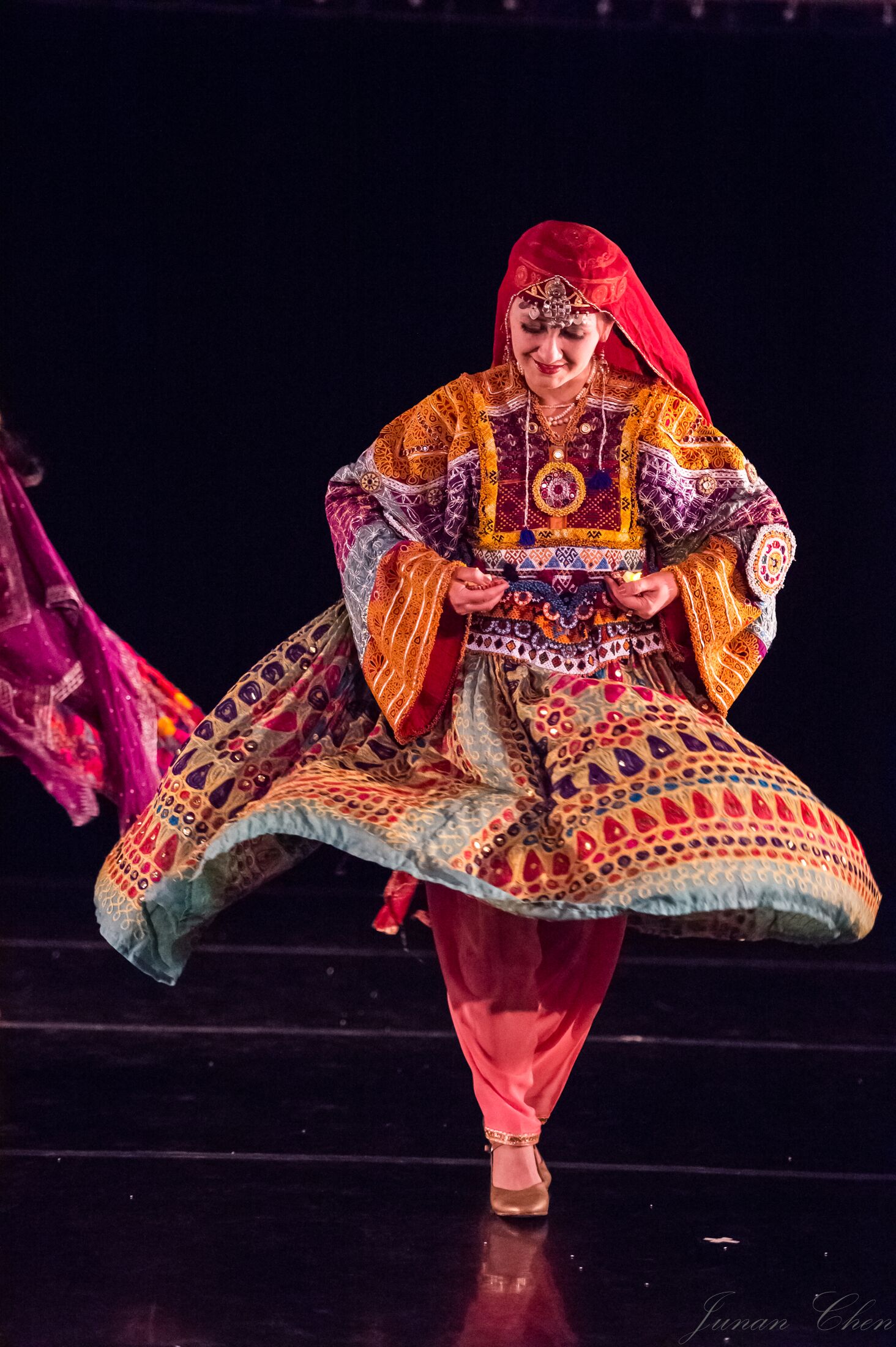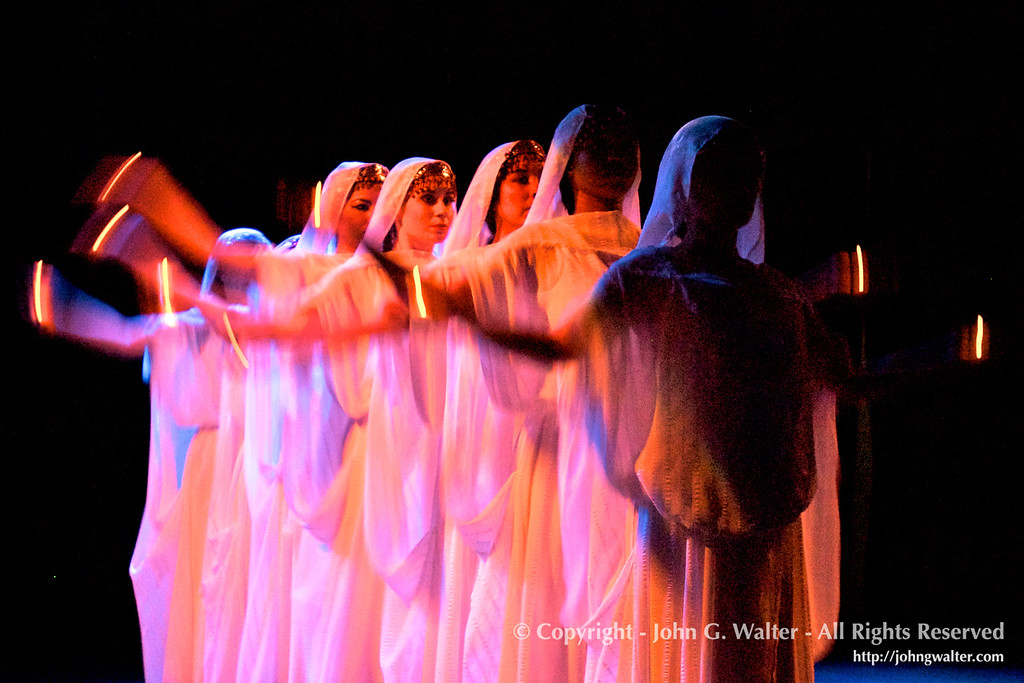Dr. Laurel Victoria Gray has little down time. “In the past 10 days,” said the founder and artistic director of the Silk Road Dance Company [SRDC], “we had a performance at an Afghan wedding, another at the Embassy of Uzbekistan. I presented an academic paper at the annual conference of the Central Eurasian Studies Society. I gave my GWU Global Dance History students their midterm — and graded and returned it. Then, I started work on a new choreography commission from the local Persian community.
The 24-year-old SRDC presents traditional and contemporary women’s dances from Central Asia, the Middle East, South Asia and the Caucasus. Its goal, said Gray, is to “offer a unique glimpse of little-known cultures, especially the Islamic world.”
The ensemble — which has performed at the White House and the Kennedy Center as well as at events for embassies and cultural organizations in the Iranian, Turkish, Arab and Central Asian communities — will bring “Dance Journey Along the Silk Road” to the Takoma Park Community Center on the afternoon of Saturday, Nov. 2.
“We are happy to return to this venue for the fourth time,” said Gray, adding that more than a dozen dancers will perform a program of “dances chosen to feature some of our newest choreographies as well as some very special but seldom-performed treasures.”

Among the company’s repertoire of 200 dances from the ancient civilizations of the Silk Road she chose for the Takoma Park performance are “Turkmen, Uzbek (group and solo), Uyghur by guest dancer Irfan Otkur, Azerbaijani, Tajik from Pamir region, Kurdish, Afghan and a Zoroastrian-inspired piece.”
A native of Spokane, Washington, Gray has studied dance continuously since age 6. She has earned multiple academic degrees, including a doctorate in history. Since relocating to the D.C. area in 1995, the founder of the Uzbek Dance and Culture Society has taught at George Washington University, Joy of Motion Dance Center, Joe’s Movement Emporium and through Holy Cross Senior Source.
To support her historical research, teaching and choreography, Gray has traveled extensively. Her journeys to five continents – among them, 14 visits to Uzbekistan — also enabled her “to amass an immense and stunningly beautiful collection of antique [dance] costumes.”
During its two-plus decades, SRDC has evolved. Noting a “shift in the ethnicity of the dancers. Iranian born and Iranian-American dancers, along with Russians and Central Asians, frequently ‘outnumber’ local Americans,” Gray concluded, “This helps deepen the cultural connection and knowledge.”
Gray is disappointed in what she considers an “odd sort of relationship with the so-called ‘mainstream’ dance community that focuses on our costumes, but not our dances.” She attributes it to a cultural disconnect, a lack of understanding that “Central Asian, Turkic, Arab and Persian dances have a different aesthetic. They are usually improvisational in origin and require a deep connection to music and poetic lyrics. Movements are subtle and delicate. The face dances as well. The stage is used less because the dance is more internal.”

“Dance is more than just movement,” Gray added. “It is the literally embodiment of culture. There are subtleties of holding the body, even in greeting each other, that are embedded in dance movements.”
With SRDC, Gray strives to share the heritage of the “often-overlooked, rich and varied dance legacy of the 50 Muslim-majority nations,” she said. “The costumes are part of the dance, helping shape the movements. We hope for a more nuanced understanding and appreciation for these genres.”
Next year, the company’s 25th anniversary, means more items for Gray’s lengthy to-do list. “We have exciting programs planned.” Although details are not yet ready to release, she “can say [that]‘shortly before the 2020 presidential election … we will premiere a new concert work, ‘Visions From the Book of Omens,’ that draws on the Safavid Persian and Ottoman Turkish tradition of the Falciyar (fortune teller) who used bibliomancy to predict the future.”
The City of Takoma Park’s Takoma Park Arts Series presents The Silk Road Dance Company and the Uzbek Dance & Culture Society’s “Dance Journey Along the Silk Road,” from 1 to 2:30 p.m. Saturday, Nov. 2, at the Takoma Park Community Center Auditorium, 7500 Maple Ave., Takoma Park. A pre-concert Silk Road Bazaar, with clothing and other items from Silk Road cultures, will open at noon. Admission is free with a $10 suggested donation. Visit www.silkroaddance.com or call 301-585-1105.